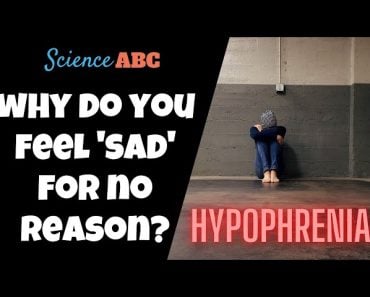Table of Contents (click to expand)
Emotionally Focused Therapy, also known as EFT, entails a variety of therapeutic approaches that can be used for individuals, families and couples, and centers around the understanding and regulation of emotions as the foundation for positive change in interpersonal relationships, communication and emotional management.
There are many different approaches and methodologies within psychotherapy, and the field continues to evolve as new techniques are practiced and more knowledge is gained about human behavior. Some approaches are popular for a short period of history, while others have stood the test of time and continue to be valuable in various realms of psychotherapy.
Other approaches change and grow over time as more professionals utilize the methods and find new applications or compatible strategies. This is the case for emotionally focused therapy (EFT), which was developed as a means of relationship and marriage counseling, and has since become one of the most trusted and widely applicable tactics for interpersonal and individual therapy as well!
Recommended Video for you:
History Of Emotionally Focused Therapy
Back in the 1980s, Dr. Les Greenberg and Dr. Sue Johnson developed the core elements of EFT as a means of providing effective couples therapy, since there was a lack of any standardized approaches. However, their approach was not completely unique, as it drew heavily on the work of other psychologists and theoreticians, including Attachment Theory (John Bowlby), Structural Theories (Salvador Minuchin) and Experiential Theory (Carl Rogers). Elements of attachment that we develop as children are critical for understanding how we interact and engage with others as we age, particularly partners to whom we grow deeply attached. Structural elements shed light on the way we interact with others, the give and take of communication and partnership. Finally, experiential theory fits into EFT because the therapy doesn’t focus on the dysfunctions, but instead tries to clarify emotional needs and desires, and elevate the emotional health and wellness of patients.
As a humanistic and experiential-based form of therapy, EFT may have begun as a form of relationship intervention for couples, but it has been expanded to include family-based therapy and individual treatment; basically, the connection of emotions to human needs is widely applicable, not only in a traditional romantic relationship. Over the past four decades, EFT has become one of the most trusted and empirically validated therapeutic approaches.
How Does EFT Work?
Depending on who is seeking treatment and what problems are present, the details of the approach may differ slightly, but at its core, EFT seeks to identify patterns/cycles within couples and individuals, and create a comfortable space for patients to open up emotionally. The target area for this therapy is the nexus of emotion, cognition and behavior, with the therapist playing the role of facilitator or “choreographer”, rather than a passive observer or impartial witness.
On key element of EFT is identifying one’s attachment style, and considering how that may affect your reactions and behaviors to others in your life, including in partnerships. The four attachment styles for adults include secure, anxious-preoccupied, dismissive-avoidant and fearful-avoidant. For a deeper examination of these attachment styles, you can learn more in our article here.
Understanding emotion response styles is also critical to this therapeutic approach; the four emotion response styles are primary adaptive, primary maladaptive, secondary reactive and instrumental. For more details on these emotion response styles, you can check out our article here. Knowing what emotional response style a patient or members of a couple utilize will help the therapist manage the sessions better, whether it is empathetic exploration, discussing unmet needs, or directly addressing avoidant or manipulative behavior.
As mentioned above, an EFT professional helps to facilitate challenging conversations; in other words, the therapist doesn’t simply ask a question and then sit back to scribble in a notebook for the remainder of the session. The therapist can be an active participant, observing interactions and analyzing statements in real time; this real-time, experiential aspect of the therapy is one of its strongest foundations. The intention of this therapy is to access and address the core issues a couple or individual is experiencing, eliminating the layers of obfuscation or discomfort that so commonly get in the way of honest assessment and self-realization.

The end goal of EFT, broadly, is to foster healthy forms of dependency and emotional connections, creating a space where a person’s emotional needs can be expressed, heard and responded to in a healthy way. For couples, a successful end result is a situation where both partners can express their fears and needs to one another, which strengthens their bond and improves their ability to communicate in a long-term and sustainable way. For individuals and families, the end goal may be an improved ability to express emotions honestly and ensure that one’s needs are met in both friendships and interpersonal actions of all kinds.
Strengths And Weaknesses Of Emotionally Focused Therapy
Considering the explanation above, it may seem that Emotionally Focused Therapy is applicable across all situations, but that isn’t the case. There are a number of particular strengths and critical weaknesses to this approach.
Strengths
The main benefit of this approach is that it doesn’t seek to identify dysfunction, but rather improve the foundational skills of communication and emotional regulation. The progress that can be made in individuals could affect many other aspects of life aside from their romantic relationships or interactions, as it can enlighten and alter one’s personality in dramatic and eye-opening ways.
Over the years, this approach has also seen a high level of success, with many couples and individuals reporting long-term benefits and lasting effects, even after the average of 8-20 sessions. The duration of the work is often a critique of traditional therapy, where patients may remain engaged for years, but fail to see any measurable changes in their issues.

This therapy is particularly effective for couples who have a genuine interest in improving their relationship and finding a positive path forward. Those who are prepared to emotionally invest and open up in these therapy sessions, and form a strong alliance with the therapist, are more likely to find success through the process.
Weaknesses
EFT is an early response to problems in a relationship; if a couple has already decided to separate, or has begun the process, EFT is unlikely to help, and may actually exacerbate the issues, since their ability to emotionally connect or respect one another may be nonexistent. Furthermore, violent or abusive couples rarely find success through EFT, since emotions are often weaponized, so the additional exposure of feelings may be dangerous, or unwanted.

There is also some criticism that EFT is too broad and flexible, without a formal structure for repeatability or study. Essentially, since every person’s emotional profile and characteristics differ, there is no quantifiable measure of efficacy, and too many variables involved per case. However, given the reported success and popularity of EFT, these claims don’t seem to hold much weight in the therapeutic realm.
A Final Word
There are dozens of validated and effective forms of therapy, but EFT has stood the test of time, continuing to be relevant and successful for decades, even through its variations and iterations. Choosing a therapist and a form of therapy is a personal and often nuanced choice. We suggest trying out EFT if you are a couple who wants to improve their emotional connectedness and communication, or an individual who wants to engage more honestly with friends, family and co-workers. Finding the approach and the professional that works best for you is essential if you want to truly benefit from your self-work in therapy!
References (click to expand)
- Greenberg, L. S., Ford, C. L., Alden, L. S., & Johnson, S. M. (1993). In-session change in emotionally focused therapy. Journal of Consulting and Clinical Psychology. American Psychological Association (APA).
- Obegi J. H.,& Berant E. (2010). Attachment Theory and Research in Clinical Work with Adults. Guilford Press
- Johnson, S. M., Hunsley, J., Greenberg, L., & Schindler, D. (1999). Emotionally focused couples therapy: Status and challenges. Clinical Psychology: Science and Practice. American Psychological Association (APA).













